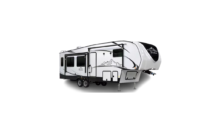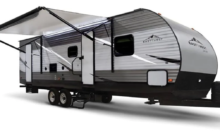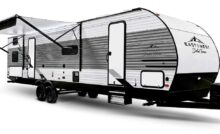2022 East to West Tandara Fifth Wheels Precautions and Equipment Owners Manual

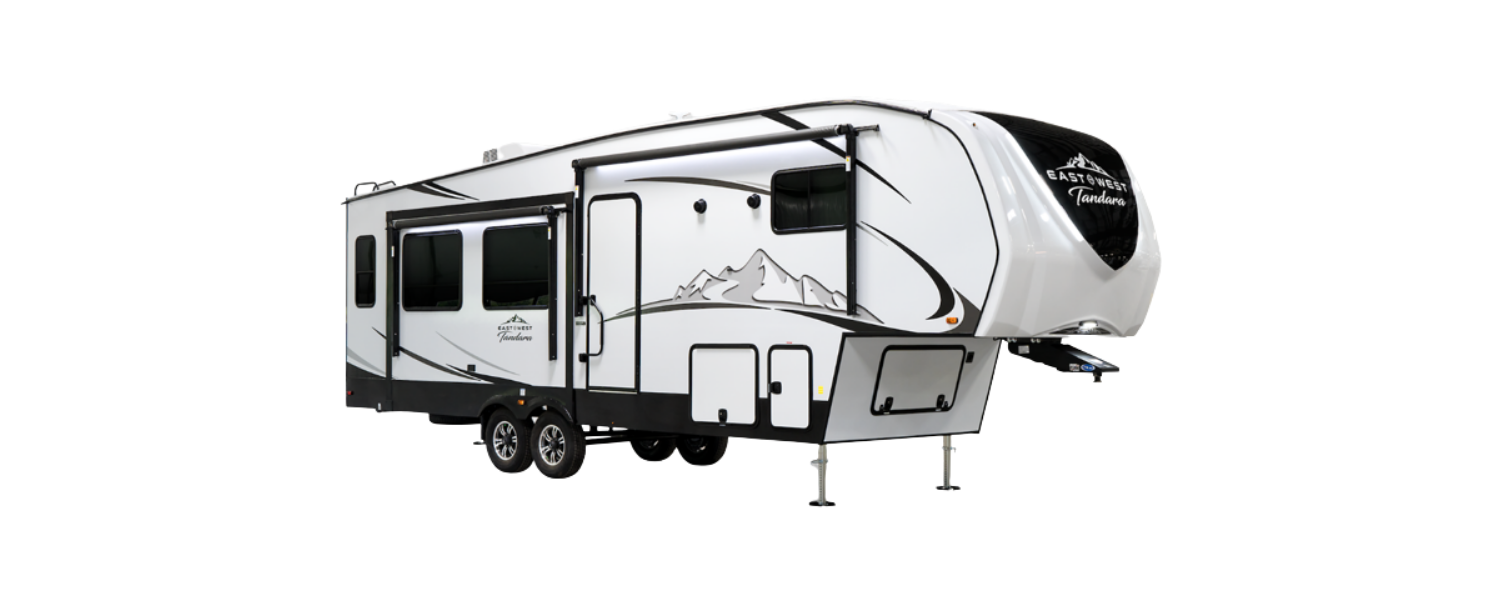


2022 East to West Tandara Fifth Wheels Precautions and Equipment
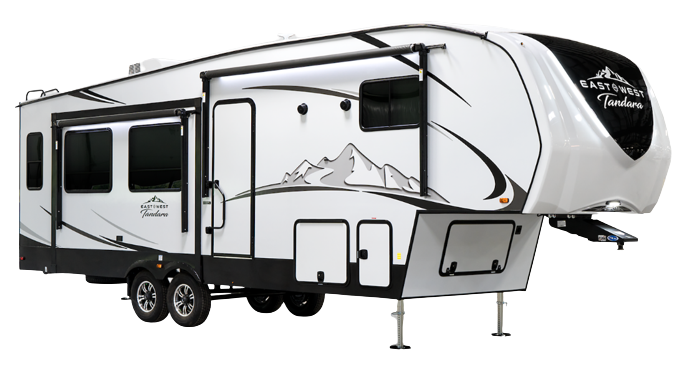


Precautions and Equipment
SAFETY PLANNING
- ALWAYS have a plan of escape. Update and practice your escape plan every six months.
- Have a meeting and discuss the plan, showing everyone what to do including guests.
- Examine the escape window and be familiar with its operation.
- Do NOT waste time by picking up valuables or getting dressed. Sometimes seconds count!
WARNING
NEVER ignore alarms on safety devices. If the alarm sounds and you are not absolutely certain of the source, get everyone out of the recreational vehicle immediately.
WARNING
Smoke, propane, and CO alarms may have an expiration date.
SMOKE ALARM
- Your RV is equipped with a smoke alarm that is listed for use in recreational vehicles.
- A smoke alarm works for only detecting smoke, not fire and the alarm will sound only if smoke reaches the sensor. Smoke alarms may not have time to alarm before the fire causes damage, injury, or even death.
- This unit will not alert hearing-impaired residents. (Special alarms with flashing strobe lights are needed for the hearing impaired.)
- Smoke alarms have a limited life and are not foolproof. Never attempt to repair a smoke alarm; replace it if faulty. Never disconnect the battery to silence the alarm.
WARNING
Test smoke alarm operation after the vehicle has been in storage, before each trip, and at least once per week during use. Failure to do so may result in death or serious injury.
CO DETECTOR
- Your RV is equipped with a carbon monoxide detector that is listed for use in recreational vehicles.
- The carbon monoxide detector is designed to detect carbon monoxide from any source of combustion. It is NOT designed to detect smoke, fire, or any other gases
- Some carbon monoxide detectors are hard-wired and some have batteries that require periodic inspection and replacement. Detectors that require batteries, do not work without batteries. NEVER remove batteries except for replacement
- Test the detector each week while RV is in use and before beginning a trip. Press the ‘TEST’ button. If the alarm fails to sound, replace the unit immediately with the same model or with one that is listed for the RV application. DO NOT attempt to repair.
WARNING
Test the CO detector operation after the vehicle has been in storage, before each trip, and at least once per week during use. Failure to do so may result in death or serious injury.
PROPANE DETECTOR
- Your RV is equipped with a propane detector that is listed for use in recreational vehicles.
- The propane detector senses propane in the air, not smoke or fire, or other gases. It detects the presence of propane at the sensor but explosive gas may be present in other areas.
- Some propane detectors are hard-wired and some have batteries that require periodic inspection and replacement. Detectors that require batteries, do not work without batteries. NEVER remove batteries except for replacement.
- Test the detector each week while RV is in use and before beginning a trip. Press the ‘TEST’ button. If the alarm fails to sound, replace the unit immediately with the same model or with one that is listed for the RV application. DO NOT attempt to repair.
- The detector alarm may sound at times when no propane is present due to household product use, such as aerosol hair spray, certain cleaners, adhesives, alcohol, etc.
WARNING
Test the Propane detector operation after the vehicle has been in storage, before each trip, and at least once per week during use. Failure to do so may result in death or serious injury.
DANGER
If the propane detector senses the presence of propane, the light will turn from green to red, accompanied by an audible alarm. If the alarm sounds:
1. Immediately evacuate all occupants from the recreational vehicle.
2. Shut OFF the propane supply at the container valve(s) or propane supply connection.
3. Extinguish any open flames, pilot lights, and all smoking material.
4. Do NOT touch any electrical switches.
5. Open doors and windows to ventilate.
6. Do NOT use the range hood or other power vents.
7. The alarm will continue to sound as long as propane is detected or until turned off.
FIRE SAFETY
Fire safety is an important part of owning a recreational vehicle. The following basic rules of fire prevention can help eliminate the possibility of a fire:
- NEVER store flammable liquids in the recreational vehicle.
- NEVER store combustible materials near a propane-burning appliance.
- ALWAYS safely secure privacy curtains away from a propane-burning appliance.
- NEVER leave cooking food unattended.
- NEVER smoke in bed and always use an ashtray.
- NEVER allow children to play with propane or electrical equipment.
- NEVER use an open flame as a flashlight.
- Have faulty or damaged wiring and electrical components repaired immediately?
- NEVER overload electrical circuits.
- Locate any propane leaks and have them repaired IMMEDIATELY.
- Keep cooking surfaces clean and free from debris.
- NEVER allow rubbish to accumulate.
- NEVER clean with a flammable substance.
- Spray fabrics annually with a flame retardant.
- Be sure that everyone in your RV is familiar with the location of all exits, including exit windows.
- Make sure everyone is familiar with the location and proper operation of all fire extinguishers.
WARNING
In case of fire:
- EVACUATE EVERYONE FROM THE RECREATIONAL VEHICLE IMMEDIATELY.
- DO NOT ATTEMPT TO USE WATER TO PUT OUT A FIRE.
- TURN OFF THE PROPANE SOURCE IF YOU CAN SAFELY ACCESS IT.
- UNPLUG THE POWER SUPPLY IF YOU CAN SAFELY ACCESS IT.
- DISCONNECT THE GENERATOR IF YOU CAN SAFELY ACCESS IT.
- CALL LOCAL EMERGENCY SERVICES OR 911.
WARNING
Portable fuel-burning equipment, including wood or charcoal burning grills and stoves, shall NOT be used inside the vehicle. Doing so may cause a fire, explosion, carbon monoxide poisoning, or asphyxiation. Failure to do so may result in death or serious injury.
FIRE EXTINGUISHER
A fire extinguisher is provided with your RV. Please become thoroughly familiar with the location and operating instructions displayed on the side of the fire extinguisher.
When using a fire extinguisher, utilize the ‘PASS’ method. Familiarize yourself and all RV occupants with this procedure:
- Pull the pin (some extinguishers may have a cartridge you need to push).
- Aim the nozzle at the base of the fire.
- Squeeze the handle to release the extinguishing agent.
- Spray the base of the fire. (If you aim at the flames, you won’t extinguish the fire.)
It’s recommended that you inspect the fire extinguisher for proper charge before each trip and at least once a month in accordance with National Fire Protection Association (NFPA). If the extinguisher is past its expiration date, it must be replaced with the same type and size as the one originally supplied in your recreational vehicle.
NOTICE
The provided fire extinguisher is only designed to clear a path to an exit in the event of a fire.
WARNING
Avoid inhaling the dry chemicals from the fire extinguisher. Although non-toxic, they could cause temporary irritation and may damage surfaces.
EMERGENCY EGRESS WINDOW
The emergency egress window allows for an emergency exit if the main entry door is not accessible. All exit (egress) windows have red operational handles or levers. An exit window may be a large sectional pane of an exit window or an entire exit window. Learn and practice how to open and operate the egress window before an emergency occurs.
NOTICE
It is important you know how to open and operate the exit windows in your recreational vehicle before an emergency occurs. Please consult your dealer for the location and complete operation of your exit windows.
Recent Posts
VW Jetta Engine Fuse Box Diagram
Access the comprehensive 2010-2018 VW Jetta Passenger Fuse Box Diagram to troubleshoot electrical issues effectively.…
VW Jetta Passenger Fuse Box Diagram
Explore the comprehensive VW Jetta Passenger Fuse Box Diagram to troubleshoot electrical issues effectively. Understand…
2023 Ford F-150 Lightning Fuse Box Diagram
Under Hood Fuse Box Location Remove the front luggage compartment cover. Under Hood Fuse Box…
2022 Kawasaki NINJA H2 SX SE Brake Lever Adjuster Owner’s Manual
2022 Kawasaki NINJA H2 SX SE Brake Lever Adjuster Owner's Manual NOTICE Only adjust the front…
2023 Land Rover Range Rover Evoque Exiting The Vehicle Owners Manual
2023 Land Rover Range Rover Evoque Exiting The Vehicle SINGLE LOCKING WARNING Before exiting the…
2023 Land Rover Range Rover Evoque Front Seats Owners Manual
2023 Land Rover Range Rover Evoque Front Seats FRONT SEAT SAFETY Make sure to read…
